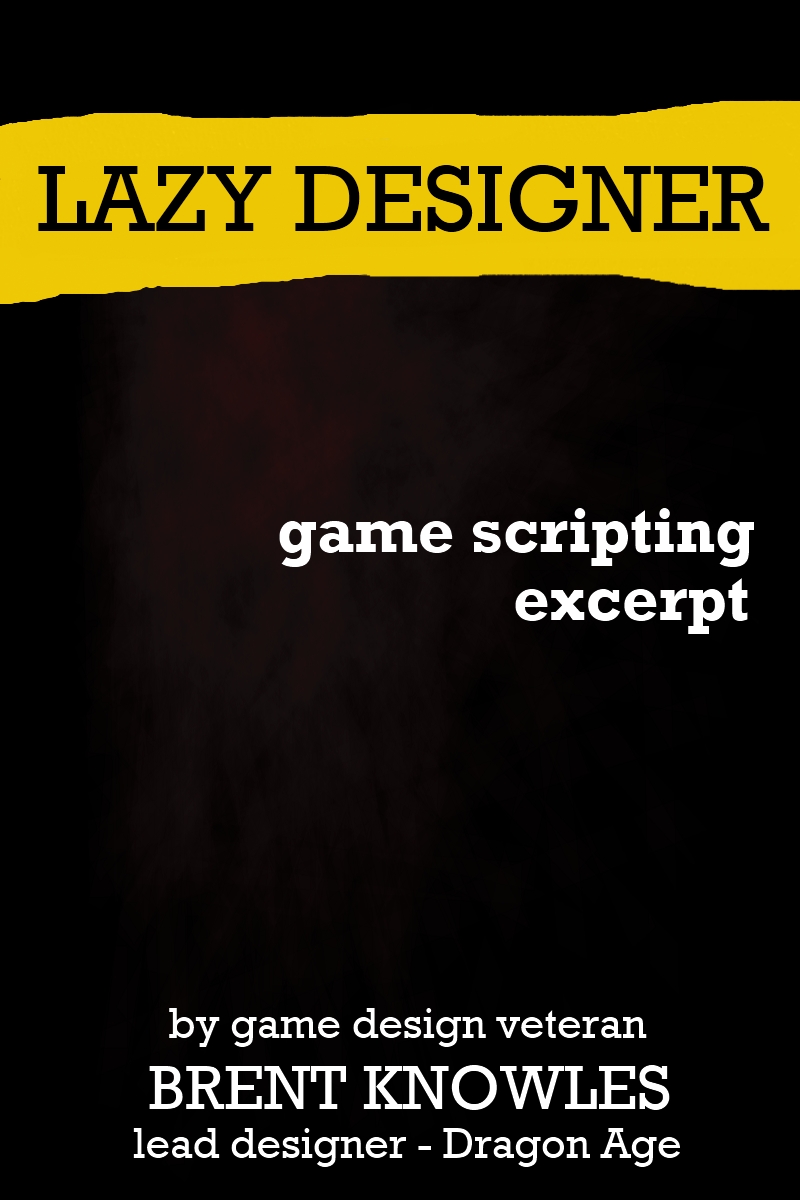-
The Product
This post, “The Product” is somewhat tied into my earlier post about passion from a few days ago. And I’ve touched on the concept last year as well. I just wanted to dig into it a bit more here. I have always created content for others. It is what I do. I remember the second or third grade and producing a radio show with the ‘advanced’ kids (I was not actually one of the advanced kids but for some reason I got to do projects with them). A few years later I was writing comic books and then building Dungeons and Dragons adventures. And then I started fiddling with programming…
-
Building a Team? The First Ingredient
As a design manager with BioWare I was involved in the interviewing and hiring and reviewing of many designers. There were certain qualities I was always looking for. Designers didn’t need to fulfill all the requirements but there was one aspect, the first ingredient, if you will, that for me was mandatory. It was not talent or genius. It was enthusiasm. Passion, if you will. An eagerness to build, to create and to share those creations with an audience. Passionate game developers build great games. Genius is needed… especially in specializations like graphic rendering or gamebot intelligence but passion sustains the developer during the long crunch hours and the many…
-
Making Monsters
Overview A while ago I discussed designing areas. As with areas it is vital to understand the purpose of the creatures you are designing. What will they will do, how they will be used, and why they are needed? Not only do artists and audio and animation need to have the time and resources to build the required creatures but the game engine needs to be capable of rendering and using the creatures in the way you intend. A boss monster that players fight once in a grand, blood-splattering final battle has significantly different cost than the lowly goblin they’ll fight horde after horde of. Even Monsters Have a Reason…
-
Designing Frustration (Part 1)
PART 1 I don’t know about the rest of you but I have tried multiple digital-task management solutions, from Excel to Outlook to Google Tasks and more. Currently I’m using Excel sheets again to keep track of which blog posts need writing, what projects I want to tackle next and so on. But tasks written there continually accumulate. Beside my laptop I also have a pile of ever dwindling sticky notes. Thing is, for many tasks I still find myself jotting notes down on paper. And those tasks I accomplish! Likewise I have hundreds of unread books stored digitally… and these I do read. But my progress through them is…
-
Design Document Traps (Intentional)
Not sure if I’ve mentioned this insidious design trick before but if so, permit me to repeat myself as I have had recent cause to use it again. Game design is a busy business and it is often hard to get people to meet for approval on features. Even when a meeting happens there are many unanswered questions that fall to the design lead to fill in. The design document the lead writes is then a contract, so to speak, between the various groups involved in the features being discussed. Implementors need to approve of the feature and management needs to sign off on it. A problem I ran into…
-
Creating Emotion in Games – Guilt as Gameplay Mechanic
The Day My Horse Died There’s a drive from several studios in the videogames industry to start building emotional experiences, hoping to hook player’s into storylines and franchises by using more sophisticated storytelling methods. Many of these, like the detailed movie-eque conversation systems that the Mass Effect franchise use have achieved significant strides in this area. But even in a longer developed industry like movie making, ‘creating emotion’ is still very difficult. Drama can become melodrama — a scene that should make a person cry, might evoke laughter instead if mistimed. And at the end of the day some people just like different things than others — when I went…
-
The Lazy Designer: Providing Useful Feedback
“How to Submit Feedback that Will Make it into the Game and not the Recycling Bin” Feedback (re: bug reports, user analysis, critiques) is essential for many creative endeavors, from writing stories or making movies or designing games. Even the most talented game designer benefits from seeing her product through the eyes of a potential consumer. Knowing how to provide great feedback is essential for a designer, preparing them for when they must solicit feedback and respond to it. Feedback in this section refers to subjective analysis of gameplay, interface, story, et cetera. More straight forward bug reporting will be described elsewhere. Consider this example: Your interface sucks more than…
-
Review: Creating Emotion in Games
Creating Emotion in Games by David Freeman This was a fantastic book, not just for writing in video games, but for writing in general. There’s great game theory in here and strong techniques for applying the many lessons prose and screen writers have learned to game design and writing. And even for games with limited writing much of the discussion of character traits and building an emotional connection with the player are equally applicable to world building, level design and even gameplay mechanics. My only real disagreements have nothing to do with the usefulness of the book, but more to do with some of David Freeman’s justifications for adding emotioneering…

